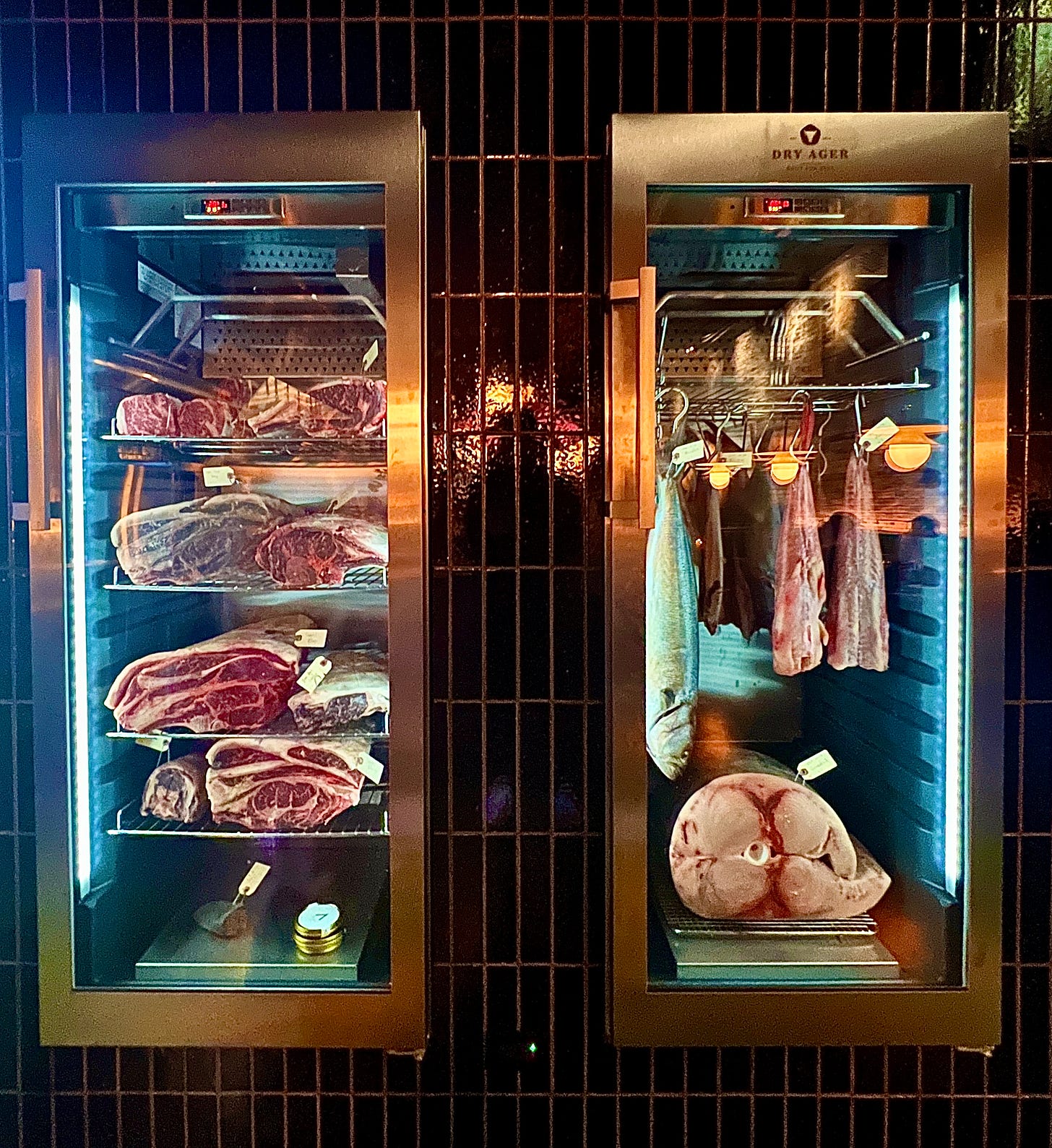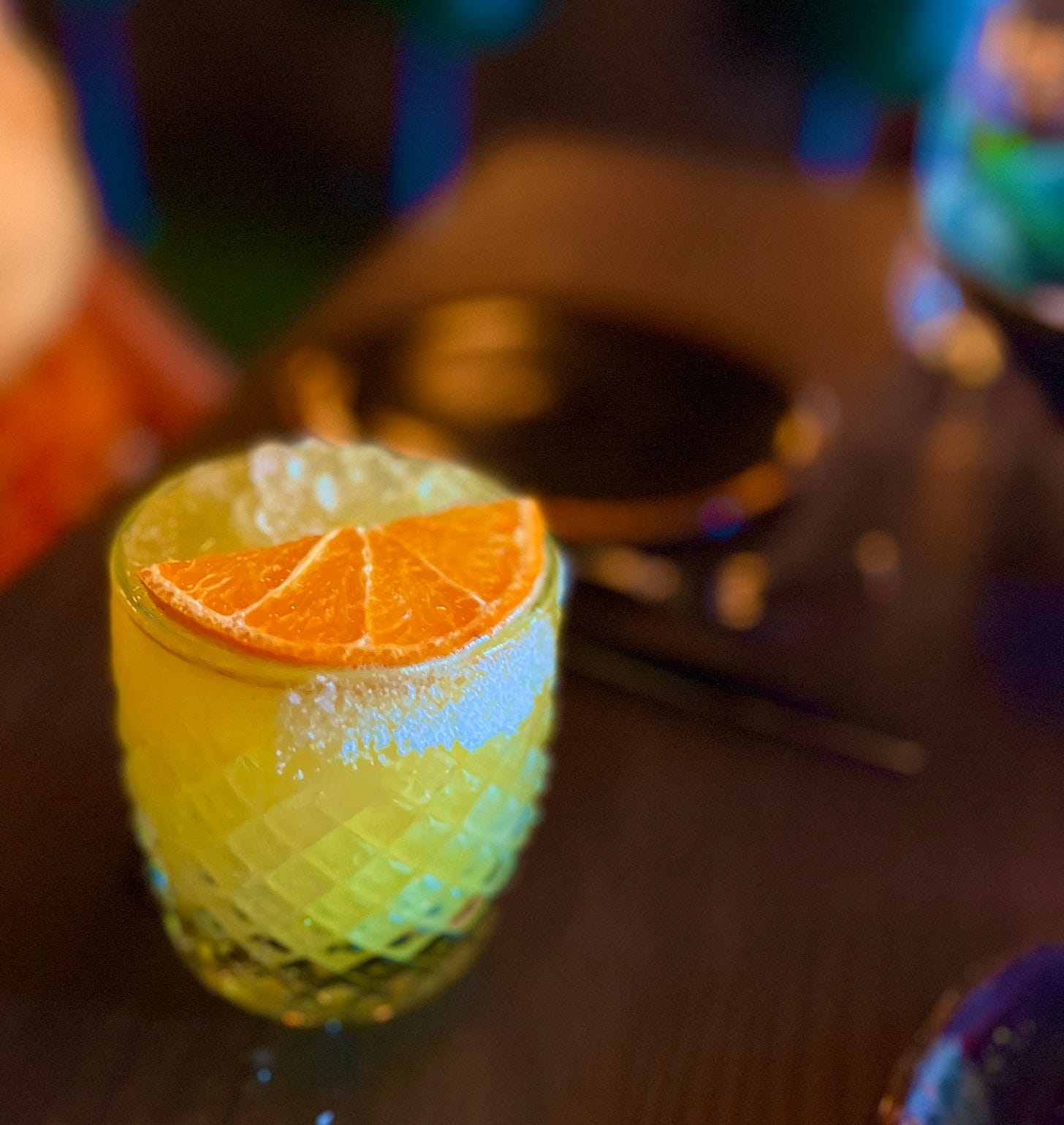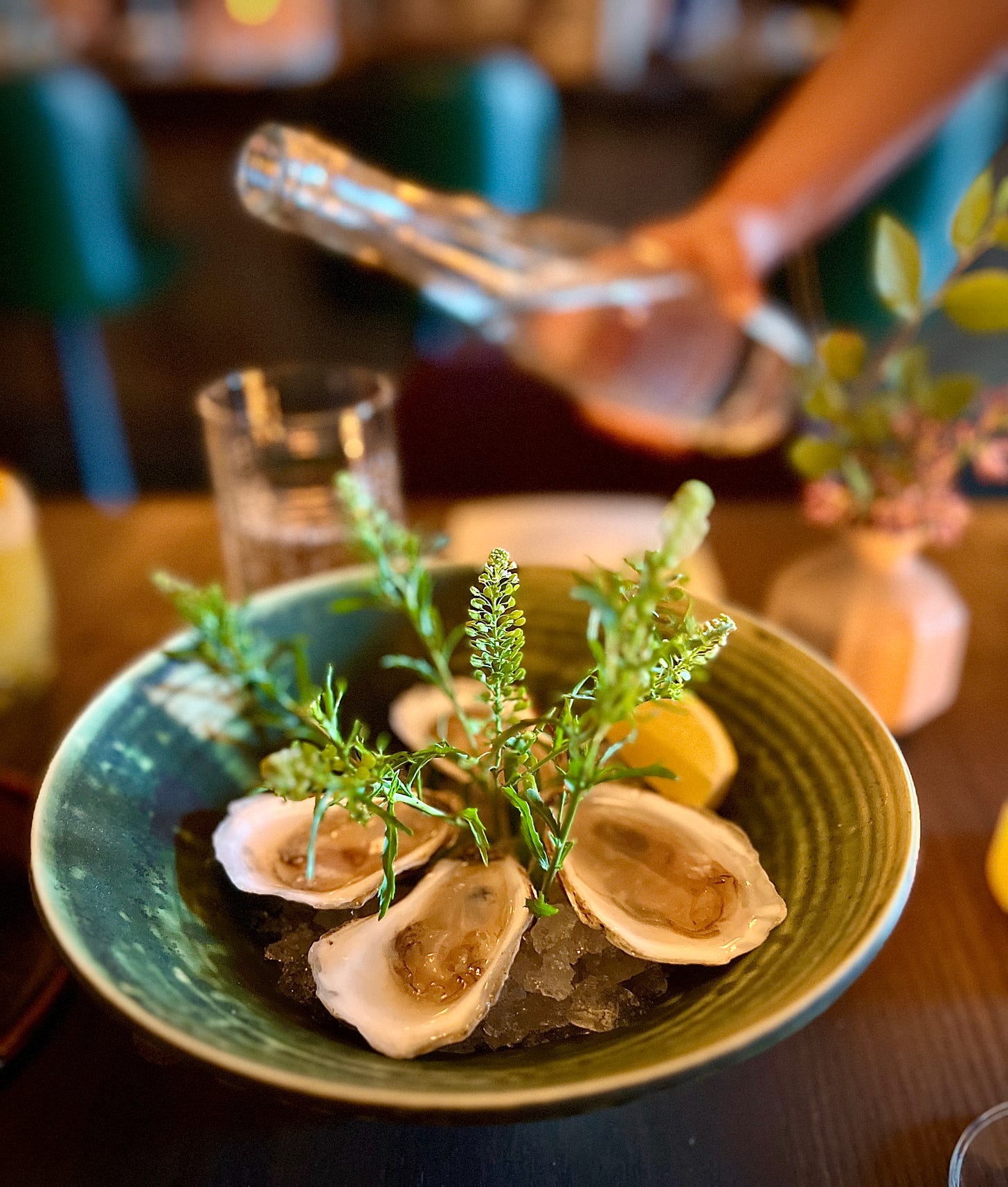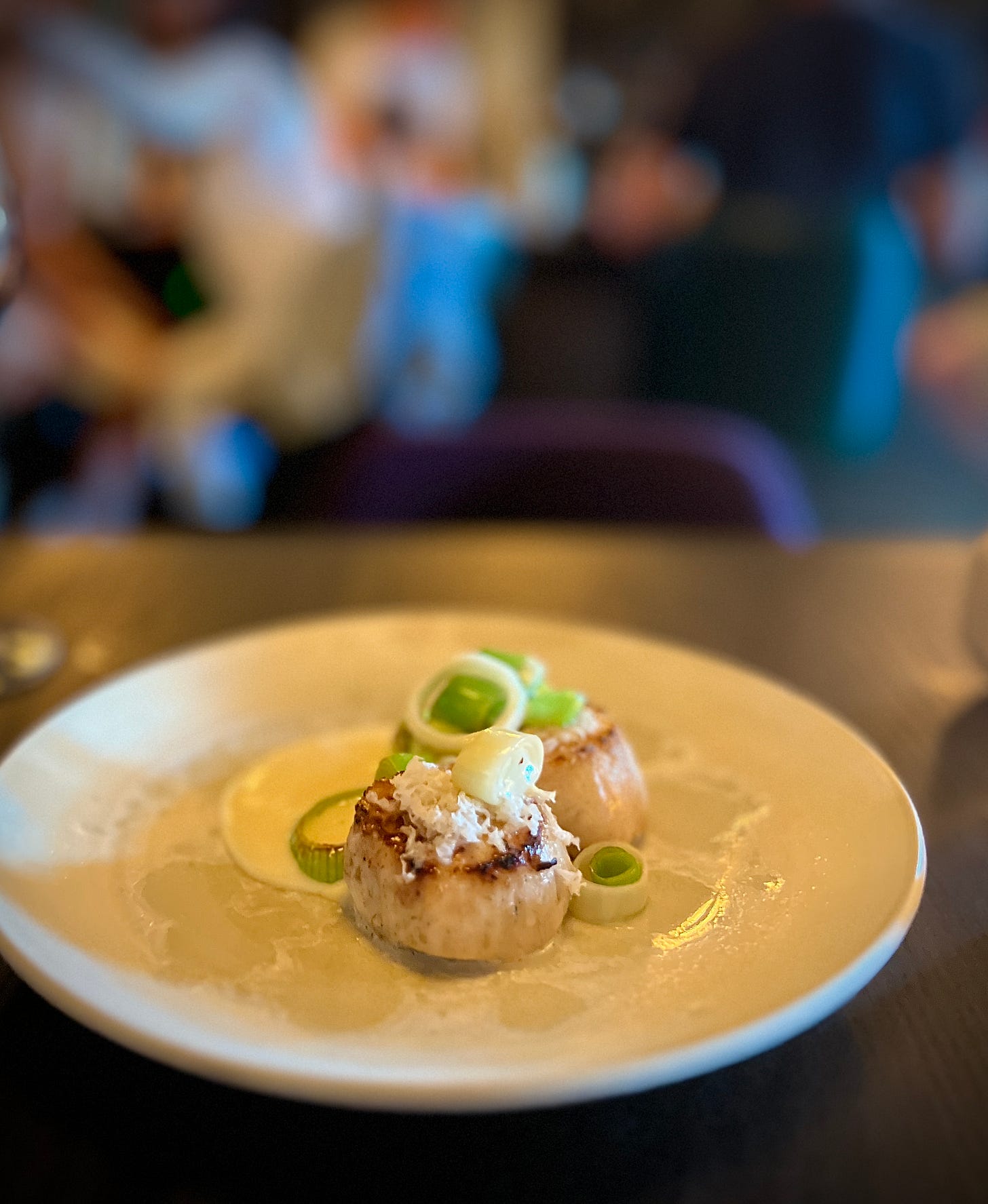Two hundred years after the rise of French Democracy a seventh son and his sister curated their birth in America wearing candy cane clothes.
The seventh son’s instruments of delivery were a Sears Silvertone 1485 amplifier and a 1964 “airline” guitar made of Res-O-Glas, a proprietary fiberglass glossed in red rimmed with a white pinstripe. The guitar, like its player, tuned itself in very peculiar ways. That’s how the seventh son liked it: every performance became a brawl for tone.
That guitar was manufactured in Chicago by Valco in a low-slung industrial building located at 2717 N. Normandy. It was sold through the Montgomery Ward catalog.
If you want to commune with the spectral souls that crafted these now religious relics, you can, either on the Northwest side or along the banks of the Chicago River by what is now, but probably not for long, the Groupon headquarters.
But back to that Bastille Day evening in 1997: a pedestal was constructed and draped in lush fabric, the Silvertone amp placed upon it like the Winged Victory of Samothrace.
Despite this ceremony, no one knew of the pomp to come. No matter what anyone says in their revisionism, the actual circumstance is that most of the thirty witnesses to what is now legend were outside filching a smoke.
The cathedral of the siblings’ origin looked like a strip club. Opened in the 1930s, for forty years it was an epicenter of drag shows before transforming into a musician’s baptismal font for the city of motors.
The seventh son’s sister, her porcelain skin and inky tresses distorted in the mirrored wall behind her. She raised her war sticks above her head as her brother quavered, “Uh, we get to bore you for two or three songs.”
Robert Plant was metaphorically dead at this moment. The seventh son paid no mind simultaneously resurrecting in his own voice the souls of Led Zeppelin’s “Golden God” and Cab Calloway.
His sister bludgeoned the taut skins of the cylinders below her hands. The pair wrought a twelve-bar blues into a wailing dirge about a soldier who had just visited the bedside of his beloved “stretched out on a long, white table” finding her “so sweet, so cold, so fair.”
That the revered White Stripes debuted with the song St. James Infirmary, an evolution of a two-hundred-year-old folk tune foundational to the birth of jazz and blues, a standard for Louis Armstrong and Calloway, was an acknowledgement that on this night, something else very wonderful this way was coming.
Music writers experience moments like this all the time. Food writers rarely, unless we’re attending an early performance of a new band for personal pleasure.
I was not at the debut of The White Stripes at Detroit’s Gold Dollar bar, but I was six months later catching regular shows there and at the Magic Stick. I have a red vinyl 7” copy of Let’s Shake Hands, the Stripes debut single to prove it.
I was also not there on service night number one at Warlord, a new Avondale restaurant. I wish I was, but I made it soon enough. A second son myself, I arrived during the first service of the seventh week, aka night #25.
I know this because the menus at Warlord, like the pressed duck certificates at Paris’s La Tour D’ Argent, are serial numbered. If I could, I would collect them all.
During week seven it still felt like seeing the early Stripes or any new band at Schuba’s that you are certain will be rocking the United Center in six months.
In case you’re not a Jack White fan, aka the seventh son, he is also known as The Third Man. Before White was a musician, he ran an upholstery business called Third Man Upholstery where he inserted random snippets of poetry inside the settees he repaired. White also wrote his customer invoices in crayon.
Today White’s record company is called Third Man Records. White’s personal logo is very similar to Warlord’s, three equally long stripes situated next to each other.
Warlord’s trio is the equitable assortment (there is no traditional brigade hierarchy in the kitchen) of Emily Kraszyk (Farmhouse), John Lupton (Kasama), and Trevor Fleming (Rootstock). The three met at Art Smith’s now defunct Table 52.
They have dedicated five years of their lives to building Warlord. Fleming told me he sold everything he owned to generate funds for the restaurant. He currently has no furniture in his home. Though the operation was bootstrapped, it is fully formed.
What I can tell from my conversation with Fleming and through some social media stalking, the chef trio, like Jack White, approach their lives, whether it’s modding motorcycles or creating visual installations, as one universal art project.
When you hear the name ‘Warlord” you probably think the chefs are either Dungeons and Dragons fiends or Call of Duty assassins. They could be. I didn’t ask. Some part of me also imagined Jack Black grunting metal lyrics while Kyle Gass shredded an electric lute in the Warlord dining room.
Sadly, Tenacious D did not appear. But, mossy fallen logs bursting with floral abundance (made by Fleming), channeling the hunting lodge of a punk rock queen did. From afar the whole thing also looked like a plant-based modernist take on a Dutch master oil painting of recently felled pheasants.
Walk around the corner from the art and you’ll find a kind of sexy abbatoir-theme in a pair of dry-aging cabinets stuffed with the flayed carcasses of fluke, swordfish, and cows. The bottom shelf of the left cabinet held a portion of cured A5 Wagyu beef tongue, a restaurant-warming gift from the now Los Angeles-based chef Shin Thompson of Niku-X (formerly Bonsoiree, Kabocha, Furious Ramen, and Bokuchans).
Warlord possesses plush purple chairs and green plump swaddling banquettes. The diagonal wood slat floor is also dyed a hue that evokes the breathtaking expanse of outfield grass at Guaranteed Rate field. While the team harbored emerald dreams for the flooring, no wood stains existed in that color. The chefs had to mix blue and yellow stain to achieve the mesmerizing shade.
The hunting lodge vibe at Warlord continues with an open kitchen powered by a constant roiling wood fire. It is impossible not to go into a flame-induced trance at some point during your meal.
The restaurant soundtrack, powered by the guttural growls of Betty Davis and the garage rock pulse of Amyl and the Sniffers will shake you from your reverie and propel you in to reveling in the trio’s food.
Warlord is like nothing else in Chicago, but it has clear influences. It feels like the very best elements of a collaboration between El Che, Rootstock, Delilah’s, The Bristol, and Curtis Duffy (Ever).
Studying the compact menu, a cheese plate, burgers, fries, steaks, green salads, oysters, pasta and scallops, you realize the trio decided to make the ultimate execution of dishes everyone craves.
Whereas your mom probably cooks down thirty bags of baby spinach into a mush, the Warlord crew barely wilts Michigan farm spinach so that its tender shoots and lithe tendrils are still crisp with sweetness and earth.
The earthiness of the greens mingles well with the smokiness of a tangerine and mezcal cocktail.
Pleasant cove oysters from Maine harbor the usual coveted east coast salinity, but none of the gag-reflex inducing chew of a typical giant Atlantic bivalve.
Honey hearth bread is full of wheat floss and yeast bubbles charred lightly from the griddle flame. It complements a heat-softened wedge of Coppinger, an American spin on French ash-infused Morbier. Pickled root veg is carved in jewel like wedges that offer an acidic foil to the creaminess of the cheese.
Everyone has a butter-braised scallop on their menu. But I don’t know anyone serving flame caramelized pucks dripping with a sturdy miso-infused bearnaise punched up with the peppery bright horseradish sharpness of grated daikon and melted leek ribbons like Warlord.
Any steakhouse worth it’s now cheesy raw-meat-platter tableside upsell has a dry aged steak, but none like Warlord give you a moderately priced brontosaurus-sized hunk roofed with a scrim of bubbling blue cheese. A side of slender-stalked chestnut mushrooms drip with demi-glace.
If Betty Davis is bringing the noise over the restaurant sound system, the steak dish brings pungent and pleasing blue cheese on blue cheese funk to my mouth.
I rarely order steak when I dine out, but watching the chefs stoke the grill flame with a paper fan to achieve a deep caramelized crust felt like some kind of titillating burlesque that made an order compulsory.
The steak pairs well with a fruit bomb 2021 Norzagarai Garua Rioja recommended by our server Sidney. Throughout the meal she aptly doubles as a killer somm and comforting presence. I involuntarily gasped after my first sip of the $16 glass pour.
The only thing I order less in restaurants than steak is flourless chocolate cake, but that is, despite Fleming’s apprenticeship in the Grace restaurant’s pastry department, the only dessert on offer.
Knowledgeable that all the menu descriptions at Warlord have thus been a kind of customer-friendly description of delicious omission, I knew there was no way I was getting some kind of 1980s lava cake.
I was rewarded with a bittersweet plank of moist chocolate roofed with a tangy crème fraiche blanket that finished with a tantalizing salt burst. The dessert was complex, reminiscent of the unique savory-skewing dessert-style of Elske’s Anna Posey.
If you’re lucky enough to have a few drops of Rioja left over like I did because Sidney graciously refreshed my glass mid-steak chew, then the cherry notes of the wine will delightfully swirl around the chocolate.
Reflecting over the last bites of dessert, I thought again about the name of the restaurant. The word Warlord often has negative connotations of an unhinged power-hungry dictator crushing whatever they hate.
Another way to look at a Warlord is as a person with a particular vision who’s able to exercise their desires unfettered by any other authority. If someone has a good and just vision, there’s no reason they can’t be a Warlord for excellence.
Kraszyk, Lupton, and Fleming have spent almost a decade executing the visions of other overlord chefs and owners, some who likely disagreed with their own artistic ideas.
The trio is now unfettered, the Warlords of their own destiny, not unlike brilliant creators Meg and Jack White. From where I’m sitting Warlord restaurant seems like the most benevolent and creative lordship around.
Warlord is located at 3198 N. Milwaukee in Chicago.










Betty Davis. I will check the place out even if for a cocktail while someone other than me is playing Betty Davis.
These are good peeps!